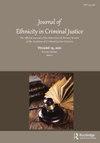书评
IF 1
Q3 CRIMINOLOGY & PENOLOGY
引用次数: 0
摘要
安德里亚·史密斯的《征服:性暴力——美国印第安人的种族灭绝》是一部复杂的叙事,以倡导、全球动员、暴力、生殖权、环境不公正、问责和赔偿为中心。重点是女权主义,特别是土著妇女及其在自己社区内的斗争,这些斗争可能与“殖民化、性暴力、非人化和边缘化的过程”直接相关(xvii)。薇诺娜·拉杜克的前言和引言是这本书的大纲。分析认为,印度人民因殖民、种族主义和歧视而受到统治社会的压迫,他们将性暴力作为工具。史密斯试图通过采取全面的方法来理解性暴力和性别暴力与父权制、同化和种族灭绝的联系,从而消除我们对性暴力和性暴力概念化的限制。在第一章中,史密斯将土著妇女和有色人种妇女定义为“可掠夺的”(第10页)。更重要的是,她提供了强奸作为白人殖民者控制手段的历史证据。通过将酷刑、致残、强奸和谋杀结合起来,它强化了征服。此外,统计数据显示,与白人女性相比,有色人种女性更有可能成为性侵、性暴力和人口贩运的受害者(澳大利亚统计局,2015年)。在第二章中,史密斯考察了政府授权的寄宿学校在原住民社区中为进一步殖民或“文明化”儿童所扮演的角色。这些机构使社会控制、父权制、性暴力、心理虐待以及其他几代印度人已经内化的虐待(即绝育)永久化。此外,由于美国政府和教会缺乏问责制,寄宿学校的幸存者被边缘化。随后,家庭被赶出了自己的土地,文化和精神传统因此遭到破坏。史密斯没有采取分离主义的观点,而是主张原住民和非裔美国人应该团结起来,努力获得对他们的赔偿。最重要的是,种族灭绝、奴役和迁移到保留地的行为直接侵犯了他们的人权。环境不公和对印度土地的破坏被视为强奸的另一种形式。例如,原住民、爱斯基摩人、夏威夷岛民和加拿大原住民本文章由计算机程序翻译,如有差异,请以英文原文为准。
Book Review
Andrea Smith’s Conquest: Sexual Violence an American Indian Genocide is a complex narrative that is centered on advocacy, global mobilization, violence, reproduction rights, environmental injustice, accountability, and reparations. The emphasis is on feminism, specifically Native women and their struggles within their own communities that can be directly linked to “the process of colonization, sexual violence, dehumanization and marginalizing” (xvii). The foreword by Winona LaDuke and the introduction are the outline for the book. The analysis is that Indian people are oppressed through colonization, racism, and discrimination by the dominant society using sexual violence as a tool. Smith attempts to eradicate the limitations we have put on conceptualizing sexual and gender violence by taking a holistic approach in understanding its connection with patriarchy, assimilation, and genocide. In Chapter 1, Smith defines Native women and women of color in general as “rapable” (p. 10). More importantly, she provides historical evidence of rape as a means of control used by white colonizers. By combining torture, mutilation, rape, and murder, it reinforced subjugation. Furthermore, this legacy can be seen in the statistics that show women of color are more likely to be victims of sexual assault, sexual violence, and human trafficking compared to white women (Australia Bureau of Statistics, 2015). In Chapter 2, Smith examines the role government-mandated boarding schools played in Native communities to further colonize or “civilize” children. These institutions perpetuated social control, patriarchy, sexual violence, psychological abuse, among other abuses (i.e., sterilization) that have been internalized by generations of Indian people. Furthermore, boarding school survivors have been marginalized due to the lack of accountability on the part of the United States government and churches. Subsequently, families were removed from their land and as a result, cultural and spiritual traditions were destroyed. Instead of taking a separatist view, Smith asserts that Native people and African Americans should be united in their efforts to receive reparations for what is owed to them. Most important, acts of genocide, slavery, and relocation to reservations are direct violations of their human rights. Environmental injustice and destruction of Indian land are regarded as another form of rape. For example, Aboriginals, Eskimos, Islanders in Hawaii, and Natives in Canada
求助全文
通过发布文献求助,成功后即可免费获取论文全文。
去求助
来源期刊

Journal of Ethnicity in Criminal Justice
CRIMINOLOGY & PENOLOGY-
CiteScore
1.70
自引率
16.70%
发文量
16
期刊介绍:
The Journal of Ethnicity in Criminal Justice explores the prejudice that currently affects our judicial system, our courts, our prisons, and our neighborhoods all around the world. This unique multidisciplinary journal is the only publication that focuses exclusively on crime, criminal justice, and ethnicity/race. Here you"ll find insightful commentaries, position papers, and examinations of new and existing legislation by scholars and professionals committed to the study of ethnicity and criminal justice. In addition, the Journal of Ethnicity in Criminal Justice presents the latest empirical findings, theoretical discussion, and research on social and criminal justice issues.
 求助内容:
求助内容: 应助结果提醒方式:
应助结果提醒方式:


